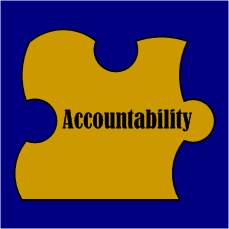How Could You? Hall of Shame-Australia-Heidi Singh case-Child Death

This will be an archive of heinous actions by those involved in child welfare, foster care and adoption. We forewarn you that these are deeply disturbing stories that may involve sex abuse, murder, kidnapping and other horrendous actions.
A 2014 case has come to light.
From Christie’s Beach, Australia, “teenager Heidi Singh died alone without ever knowing her Aboriginal culture after “languishing” in emergency care — a situation the deputy South Australian coroner has labelled “deeply shameful”.
Jayne Basheer made a raft of recommendations after holding a coronial inquest into the death of the 14-year-old near the Noarlunga railway station in August 2014.
Heidi was electrocuted after climbing an electrified pole near the station, in Adelaide’s southern suburbs, however, she was not trying to kill herself, Ms Basheer said in her findings.
“She died without the chance to be supported in her time of need by a loving foster family and without access to skilled therapeutic support,” Ms Basheer said.
In my view, it is a deeply shameful situation.”
Ms Basheer said Families SA — since rebranded the Department for Child Protection — was “unable to provide a safe and stable placement to a traumatised and vulnerable 14-year-old Aboriginal girl who was under the guardianship of the Minister”.
She noted in her findings that child protection systems royal commissioner Margaret Nyland pointed to “underinvestment over many years as a key factor that has hindered service provision in the area of child protection” after her probe in 2016.
Ms Basheer said there needed to be a better focus on early prevention programs and funding needed to be pumped into a new therapeutic model of care.
“I recommend that a sum of money be quarantined to develop a new therapeutic care model in South Australia,” she said.
She said a health economist should undertake an assessment of any potential health cost savings of a new model of care and for new foster carers to be recruited.
Ms Basheer said she could not criticise staff at HenderCare, the Christies Beach emergency accommodation where Heidi lived between 2014 and the time of her death.
“They acted diligently, in good faith and to the best of their ability in difficult circumstances,” she said.
Heidi’s death ‘not a suicide’
The inquest was told that Heidi had “complex needs”, which included repeatedly attempted suicides and had a history of self-harm.
Her case was closed by Families SA three times in the lead-up to her death.
Ms Basheer said Heidi ran from her last placement in a “distressed and dissociated state” before climbing an electrified pole near the railway station.
“I find that Heidi’s death was not a suicide — the death by electrocution was accidental and as a result of misadventure,” she said.
“I find it is not possible to conclude with any level of certainly whether Heidi’s death was a preventable death.”
Ms Basheer heard from 15 witnesses and examined 102 exhibits over 18 days when she held the inquest in November 2017.
“In this case, a 14-year-old Aboriginal child died alone, without ever knowing her own culture and community,” she said as part of her 117-page findings.
“She languished in emergency care without the assistance of a dedicated team within Families SA to focus on Aboriginal children in state care and the Aboriginal Child Placement Principle.”
Heidi was born with foetal alcohol syndrome, and taken in by foster carers Wolter and Lyn Flink just days after her birth.
“She referred to Mr Flink as ‘Poppa’ and Mrs Flink as ‘Nana’,” Ms Basheer said.
“The Flinks also informally fostered other Aboriginal children, however, these private care arrangements were never formalised.
“Heidi exhibited behavioural problems from an early age.”
She said Heidi experienced a number of tragedies in her life: her foster father Wolter Flink died in 2008, her biological mother Mary Singh died of a drug overdose in 2011 and her foster mother Lyn Flink died in 2013.
“So at the age of 12 years, Heidi had lost the only people she had known as parents,” she said.
Heidi went into the care of Mr and Mrs Flink’s daughter Alina Flink but the arrangement only lasted six months.
“During this period, Heidi was hospitalised on no less than 10 occasions,” Ms Basheer said.
“The behaviours which led to hospitalisation included aggression, violent outbursts, threatening behaviour and self-harming.”
She said Heidi later went into emergency care under the care of the Minister where she frequently absconded, forcing police and ambulance officers to manage her extreme behaviours.”
Heidi Singh’s death ‘deeply shameful’ for Families SA, not a suicide, deputy coroner finds
[MSN 11/14/19 by Meagan Dillon]
REFORM Puzzle Piece


Recent Comments